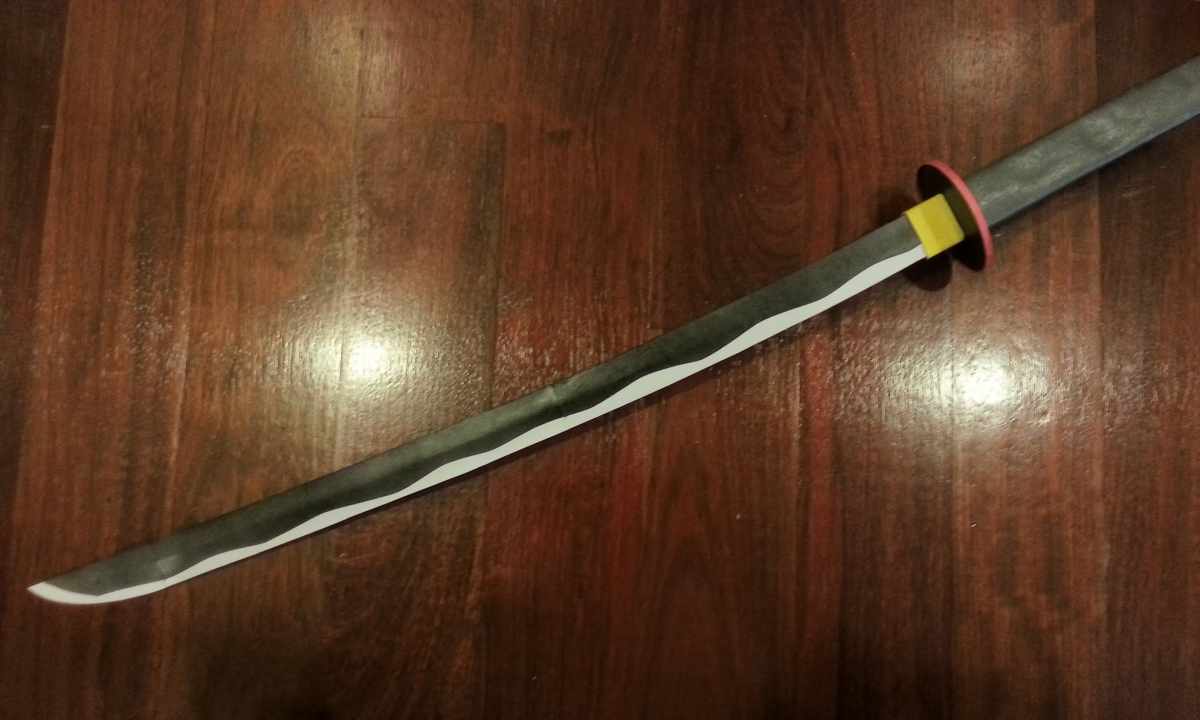Aura who surrounds the legendary samurai sword – the katana maintains interest and admiration before this type of weapon for not one hundred years. The katana is the strong, easy and flexible sword. It becomes such at the expense of special materials from which it is forged of special technology of forging and, according to legends, the correct sincere spirit of the master.
It is required to you
- Ferruterous sand
- Foundry
- Horn
- Hammer
- Anvil
- Charcoal
- Rice straw
- Clay
- Sandstone powder
- Water
- Tools for grinding and polishing became
Instruction
1. To shape the correct katana, it is necessary to stock up with special "black sand" from the Japanese coast. These are ferruterous sands from which you should melt tamakhagane - the traditional Japanese steel used for forging of samurai swords.
2. Load ore sand into the foundry – Tatar – and melt about 4 kilograms of steel on charcoal. Temperature in the melting furnace has to reach 1,500 degrees Celsius.
3. Sort steel on low-carbonaceous and high-carbon. High-carbon tamakhagane it is heavier, brightly silvery color. Low-carbonaceous - is more rough, gray-black color.
4. Cover the bottom of the forge horn with the crushed charcoal, add big pieces of coal and set fire to them. Lay the layer of low-carbon steel and again fill up with the charcoal layer. Wait steel so far to fall to the horn bottom.
5. Cover the horn bottom with ashes from rice straw in half with the charcoal crushed in powder, lay the layer of high carbon steel the hill, fill up from above with charcoal. Begin to swing bellows vigorously. Wait in the horn so far there will be no steel.
6. Take pieces tamakhagane and begin to forge from them flat sheets thickness in half-centimeter. Cool sheets in water and break on plates of 2 square centimeters. Sort steel on high-carbon and low-carbonaceous.
7. Take the selected pieces of high carbon steel, lay on the steel plate with the handle. Wrap up in paper and cover with clay. Place in the forge horn. Fill up with charcoal and heat not less than thirty minutes to brightly yellow or white color.
8. Get the block from the horn, place on anvils and besiege the hammer. Again place in the horn, heat also to the prokuyta. Repeat this cycle several times.
9. When your bar is ready, make in it nadkol the chisel and curtail on yourself. Again heat and process the hammer until the top and lower half aren't alloyed, and bar won't return to initial length. Repeat this cycle six times.
10. Before continuation of forging cut bar on four equal parts. Put their one on another and weld them together, by heating and forging. Six more times repeat turning, heating and forging. At you kavagane steel turned out.
11. Take the laid low-carbon steel, shape from it bar and then curtail also to the prokuyta its ten more times. At you it turned out "синганэ" or core steel.
12. Shape from kavagane the flat plate of 40 centimeters, curtail in the form of letter U. In this plate place bar singane. Heat preparation in the horn to bright yellow color and begin to hold down. Reach full welding of plates among themselves.
13. Make preparation for the edge, heating bar in the horn and shaping from it rectangular preparation. Give to the edge the form, by extension of preparation it is perpendicular to length. Create the cutting edge, the edge, side edges and the butt.
14. By means of the knife scraper process the sword surface. The file process the butt and the cutting edge. By means of the stone carborundum execute preliminary grinding of all edge.
15. Prepare sticky clay mix from clay, pounded charcoal and powder of sandstone in equal proportions. Dilute with water and apply with the pallet on the cutting edge. The thick layer along the butt and on side surfaces and very thin layer along the edge. Wait so far clay will stiffen. Heat the edge in the horn to 700 degrees Celsius and cool in the container with water.
16. Modify the bend of the edge and polish it.
17. The file process the edge shaft.
18. Finish production of the katana, having made the handle of two halves of wood wound at first by skin, and then the cotton cord.

